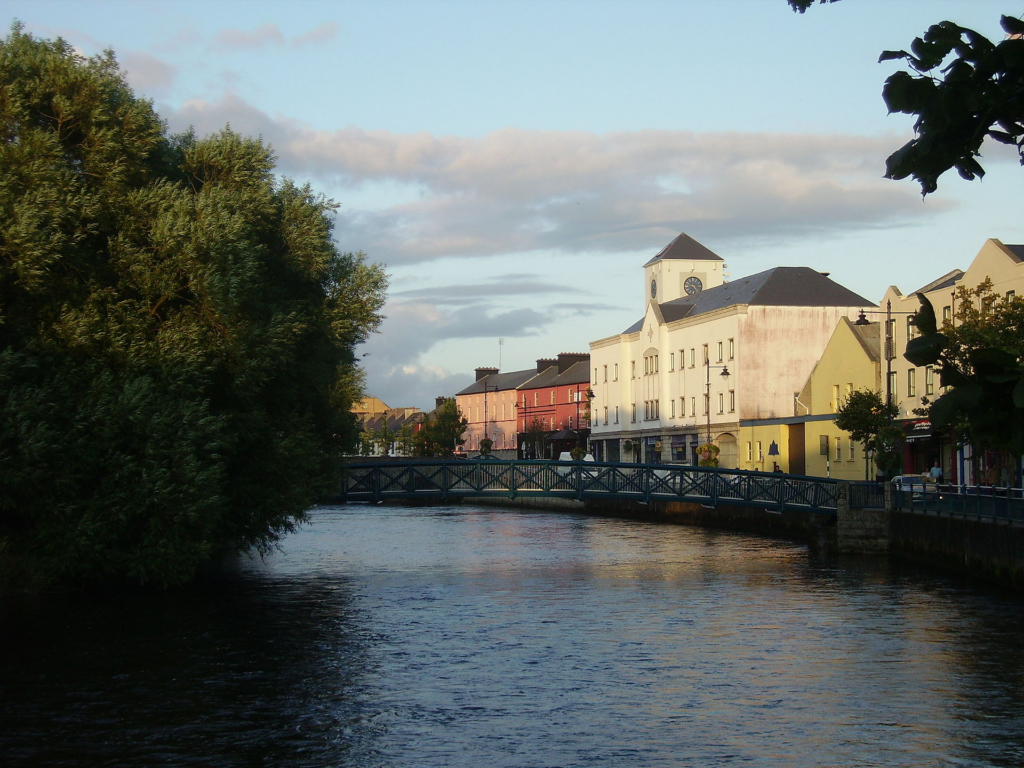
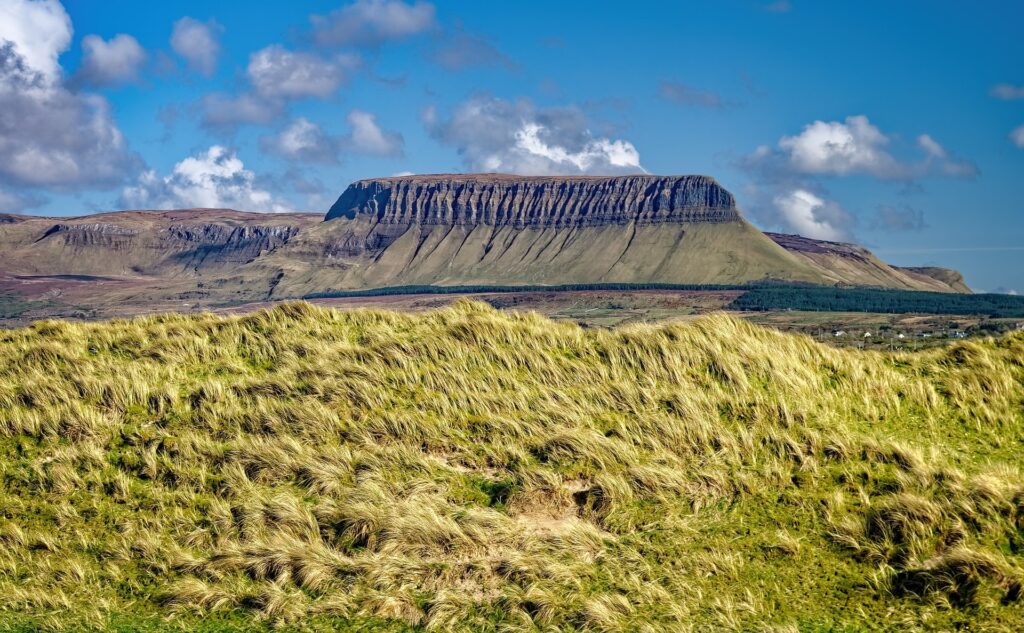
Benbulben (from the Irish: Binn Ghulbain) is the setting of several Irish legends. It is said to be one of the hunting grounds of the Fianna, a band of warriors who are said to have lived in the 3rd century.
Benbulben is a large flat-topped rock formation which is an established walking destination.From the summit there are views over the coastal plain of north County Sligo and the Atlantic Ocean.
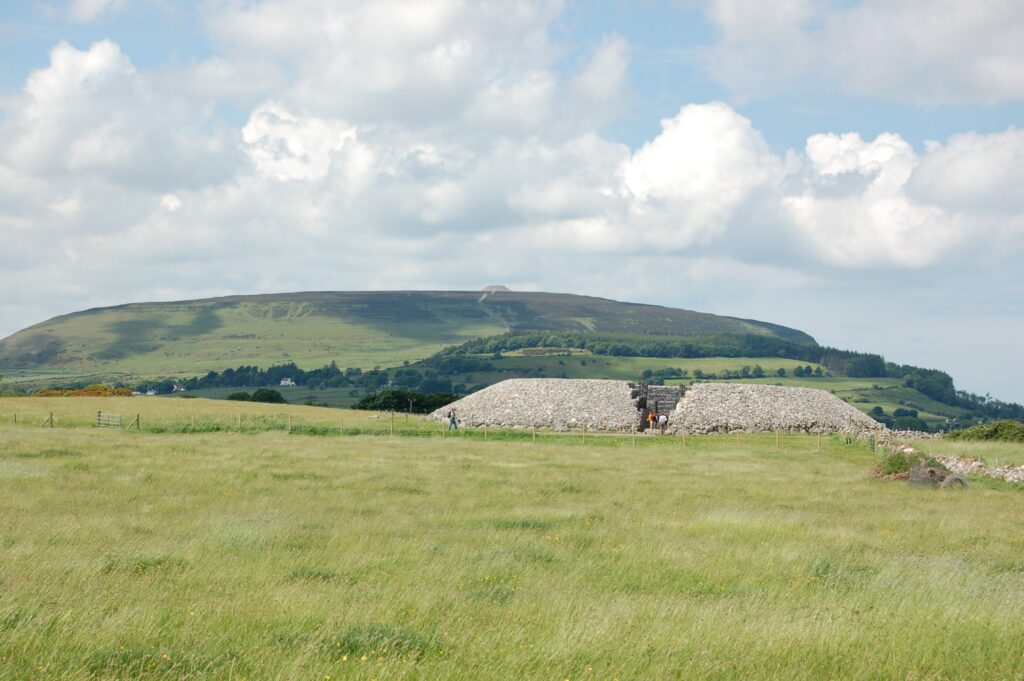
The 327-metre (1,073 ft) high limestone hill is visually striking, as it is monolithic in appearance and stands in a prominent position on the Cúil Irra peninsula between the bays of Sligo and Ballysadare. At the summit is a large cairn believed to be the burial chamber of Queen Maebh of Connacht. Although it remains unexcavated, and is one of the biggest of such monuments still unexplored, it has many of the features of a classic passage tomb.[3] It is known in Irish as Meascán Méabha or Miosgan Meadhbha meaning Medb’s Lump (Miosgán means a lump or pat, especially of butter).
Meabh’s Cairn, though by far the largest, is only one of a number of monuments on the summit of Knocknarea. In general the tombs are lined up North-South, and they may have been constructed to face the Carrowmore passage tomb cluster in the lowlands. Many of these monuments appear to have been small passage tombs; they were severely damaged by the excavations of antiquarians in the 19th century.
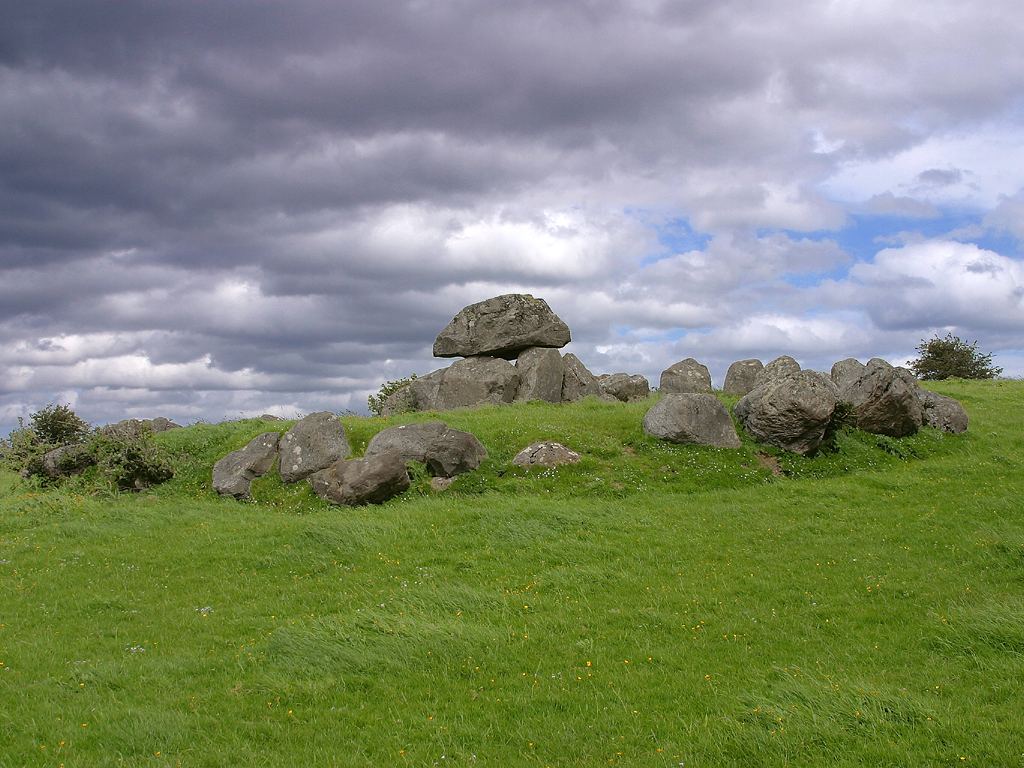
Carrowmore (Irish: An Cheathrú Mhór, ‘the great quarter’) is a large group of megalithic monuments on the Cúil Irra peninsula near Sligo, Ireland. They were built in the 4th millennium BCE, during the Neolithic era. There are thirty surviving tombs, placing Carrowmore among the largest and oldest complexes of megalithic tombs in Ireland. It is considered one of the ‘big four’ along with Carrowkeel, Loughcrew and Brú na Bóinne. Carrowmore is the heart of an ancient ritual landscape which is dominated by the mountain of Knocknarea to the west.
Carrowmore placed on a small plateau at an altitude of between 36.5 and 59 metres above sea level it is the focal point of a prehistoric ritual landscape which is dominated by the mountain of Knocknarea to the west with the great cairn of Miosgán Médhbh on top. To the east, in Carns townland, two large cairns overlook Lough Gill, and along the eastern boundary of the peninsula the Ballygawley Mountains have four passage tombs at their peaks.
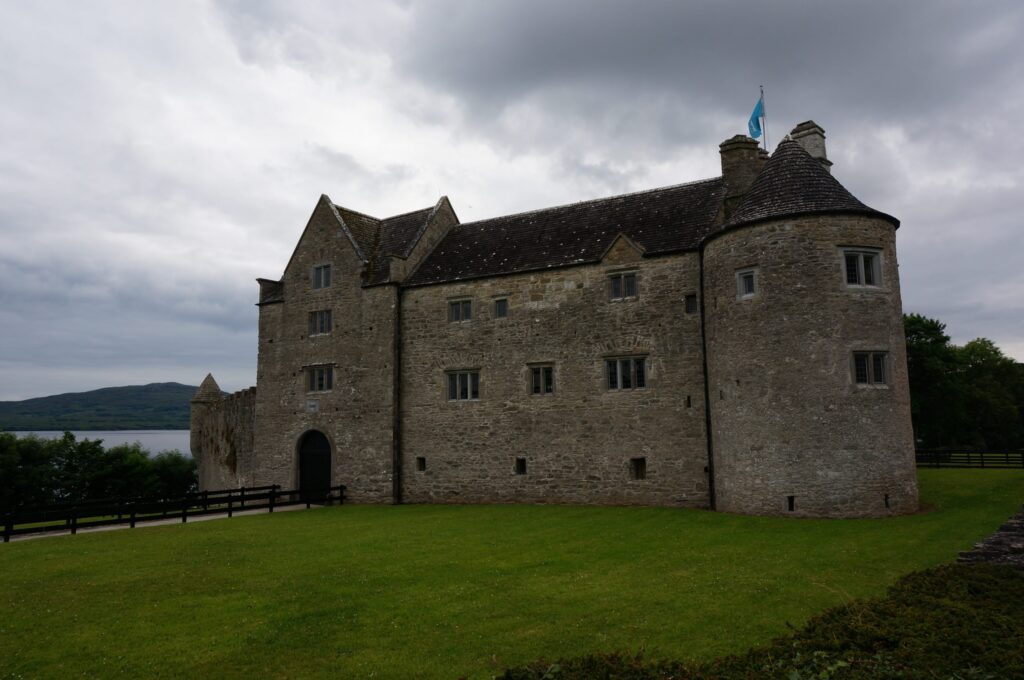
Parke’s Castle (also known as Newtown Castle and O’Rourke’s Castle) is a plantation era castle situated on the banks of Lough Gill, in County Leitrim, Ireland. Originally an earlier fifteenth-century O’Rourke (Uí Ruairc) castle, it came into the possession of Sir Roger Parke, who, by 1628, had completed his fortified manor house at the centre of the older Gaelic castle.The castle had extensive and sensitive restoration carried out at the end of the 20th century by the Office of Public Works. The window glazing was reinstated, and local artisans restored the timber stair and the mortise and tenon oak roof, using techniques of the 17th century.
Parke’s Castle is located 5 kilometres (3 miles) NW of Dromahair on the Sligo road (R286) and 12 km (7 miles) from Sligo. The castle is open from late March to late September. A small admission fee is charged, granting access to the castle, exhibitions and audio-visual facilities. There is access for visitors with disabilities to the ground floor.
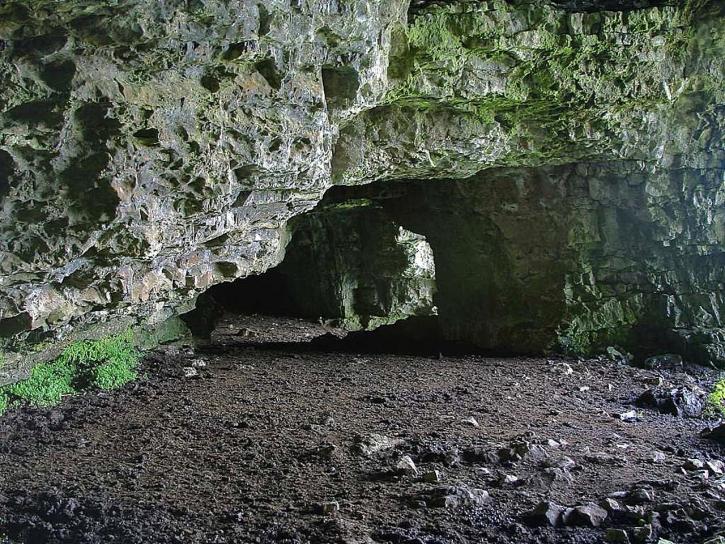
The Caves of Kesh, also known as the Keash Caves or the Caves of Keshcorran, are a series of limestone caves located near the village of Keash, County Sligo, Ireland. The caves are situated on the west side of Keshcorran Hill (part of the Bricklieve Mountains) and consist of sixteen simple chambers, some interconnecting. The caves have been used by man over several millennia, and it has long been suggested that they were the site of ancient religious practice or gathering such as Lughnasadh.
The Kesh Caves featured prominently in medieval myths and stories, with folk versions of these tales continuing in oral transmission until the 20th century. The caves are often presented as being associated with the otherworld, and as places to be respected and feared. Cath Maige Mucrama tells of the birth of Cormac mac Airt at the foot of Keshcorran. He is reputed to have been raised by a wolf in the caves, in a tale reminiscent of Romulus and Remus.

Lough Gill (Irish: Loch Gile, meaning “bright or white lake”)[2] is a freshwater lough (lake) mainly situated in County Sligo, but partly in County Leitrim. The Lough Gill system consists of the river Bonet that flows into the eastern end of the lake and the River Garavogue which drains the lake to the west near Sligo Town.
The picturesque lake is surrounded by woodlands, such as Slish Wood, Dooney Rock, and Hazelwood all of which contain popular nature trails and viewing points along the lake. The wooded hills of Slieve Killery and Slieve Daean dominate the south shore.
It is a popular location for birdwatchers.
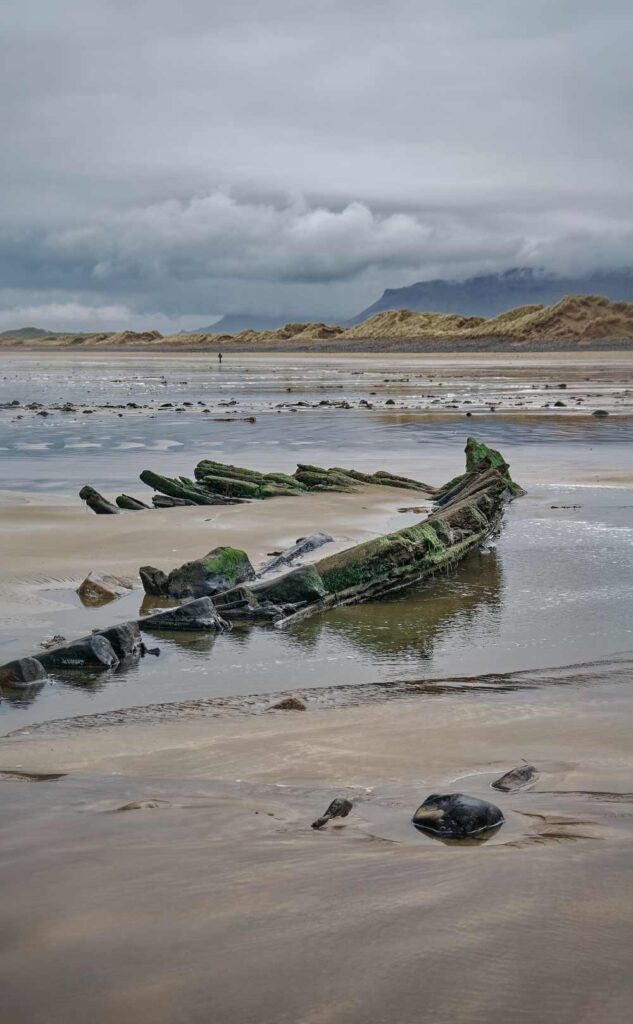
County Sligo is home to many incredible beaches along the Wild Atlantic Way, after all Sligo is named after Seashells (Shelly Place). Enjoy the Blue Flag Beach at Rosses Pt for safe swimming in a scenic location.
While others like Strandhill or Mullaghmore have waves crashing onto the shore, perfect for a spot of surfing. Or simply walk and explore the many sandy beaches for unspoiled vistas.

The 15m-high Glencar Waterfall is situated near Glencar Lake, 11km west of Manorhamilton. This famous landmark served as an inspiration to famous Irish poet William Butler Yeats.
This waterfall is particularly impressive afer rain and can be viewed from a lovely wooded walk. There are more waterfalls visible from the road but none are quite as romantic as Glencar which is mention by Yeats in his poem “The Stolen Child”
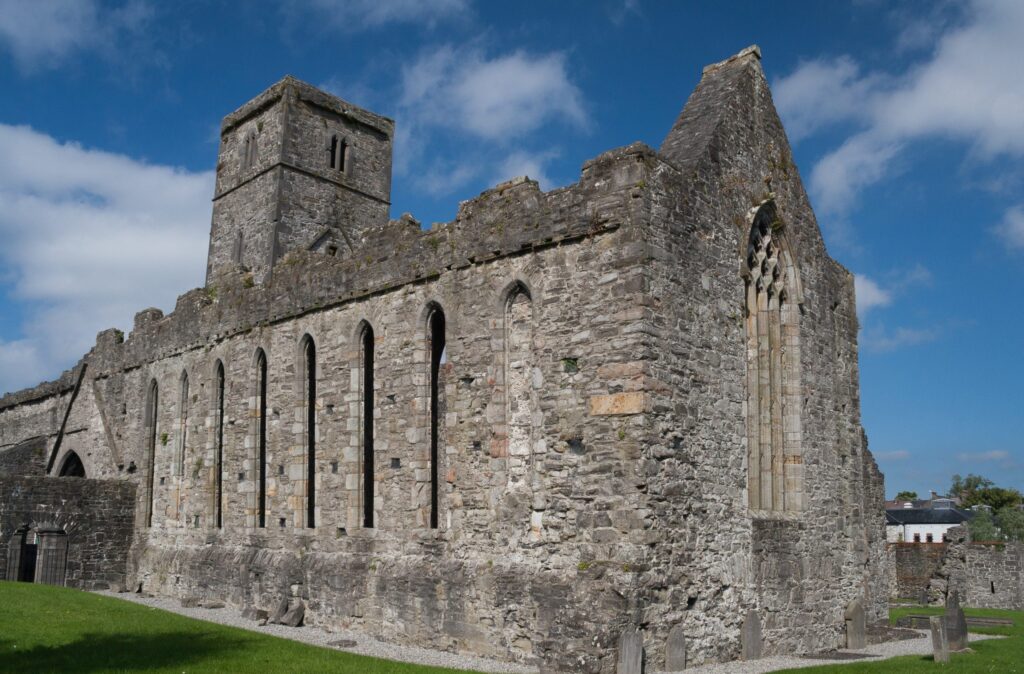
Sligo Abbey (Irish: Mainistir Shligigh) was a Dominican convent in Sligo, Ireland, founded in 1253. It was built in the Romanesque style with some later additions and alterations. Extensive ruins remain, mainly of the church and the cloister.
The abbey ruins consist of the walls of the church, inclusive those of the tower, three sides of the cloister, and remains of the sacristy, the chapter room, the refectory, and the dormitories. Most of the buildings seem to date from the 13th century, the time of the monastery’s foundation and were built in a late romanesque or more specifically Norman Style. In the 15th-century late Gothic additions and replacements were made and some others in the 16th-century.
The church was never vaulted and, having lost its wooden roof, stands open to the sky.